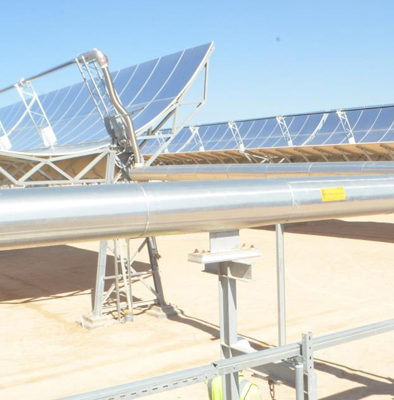Located in Borg El Arab near Alexandria, Egypt, adjacent to SRTA-City, the solar power plant is a combination of advanced solar energy-producing technologies, integrated with a desalinated water process and a cooling unit facility, making it possible to generate electricity and to co-generate fresh water in a desert region.
Cranfield University has the only UK research team in this field dedicated to research on concentrating solar power (CSP). The team devised new methods of measurement to ensure the solar collectors, which are mirrors, fulfilled the specification required at the site.
Dr Chris Sansom, Associate Professor in Concentrated Solar Power, at Cranfield said:
“This is one of only a few concentrated solar power plants in the world. We’re delighted to have been part of the collaboration between research institutes and businesses from both Egypt and the European Union. The testing and validation undertaken by our team has ensured the mirrors are the ideal shape, providing near perfect reflectance and durability in this hot and dusty environment.”
CSP mirrors need to be a parabolic shape and have a uniformly high level of reflectance to reach peak efficiency. The research ensured the mirrors which ‘catch’ the sunlight reflect it into the absorbing collection tubes, which thereafter transport the heat to the power block where it is converted into electricity in a steam turbine and generator.
To assess the solar collecting mirrors, the Cranfield team developed a photogrammetry technique that uses multiple photographs of the surface of the mirror taken at different angles, which is then analysed in 3D, to measure the shape of the mirrors. The team then used reflectometry to assess surface reflectance, thus completing the mirror validation process.
The Cranfield team also designed the desalination unit and the cooling system which are integrated into the plant.
Speaking to The Egyptian Gazette, Ambassador Ivan Surkoš, Head of the European Delegation to Egypt, said:
“The project is an excellent model of strong and successful collaboration between research institutes, public sector and private sector from Europe and Egypt, with the ultimate goal of the prosperity of our peoples.”

